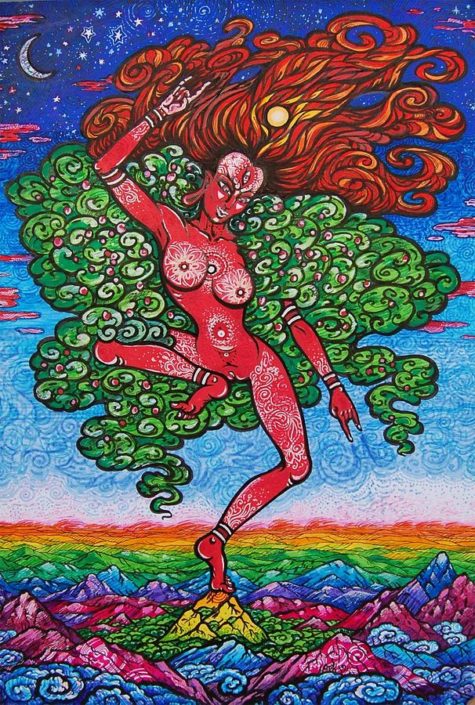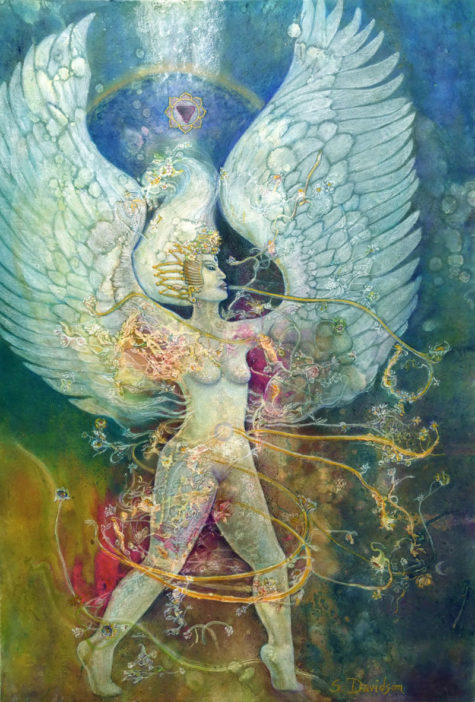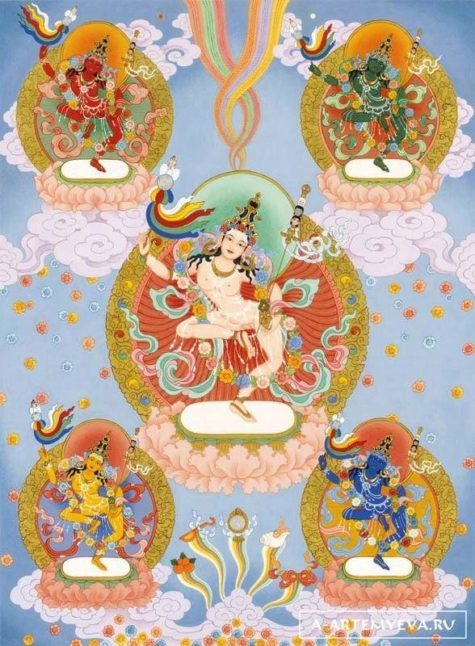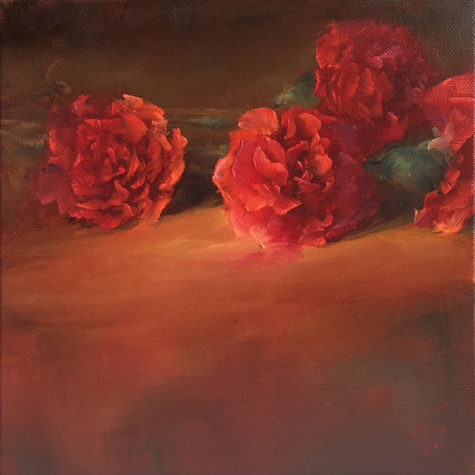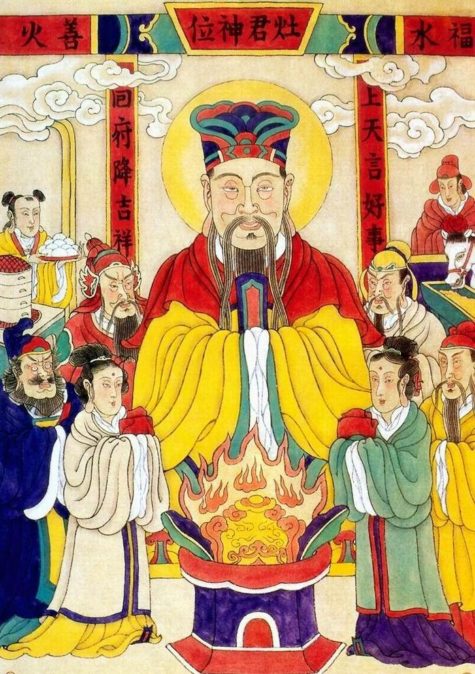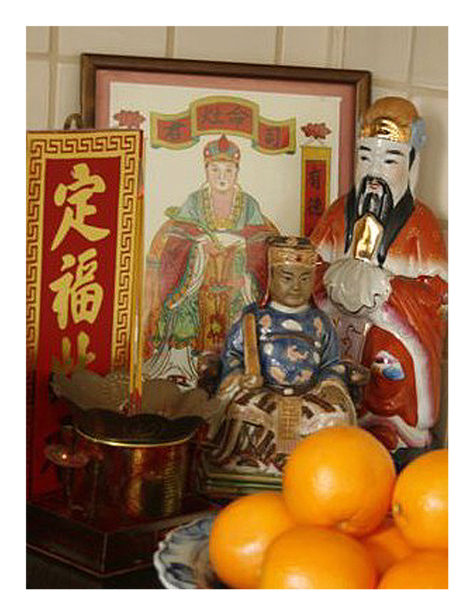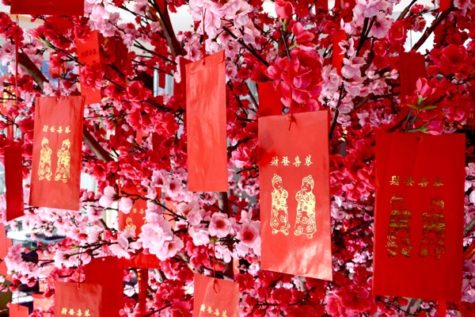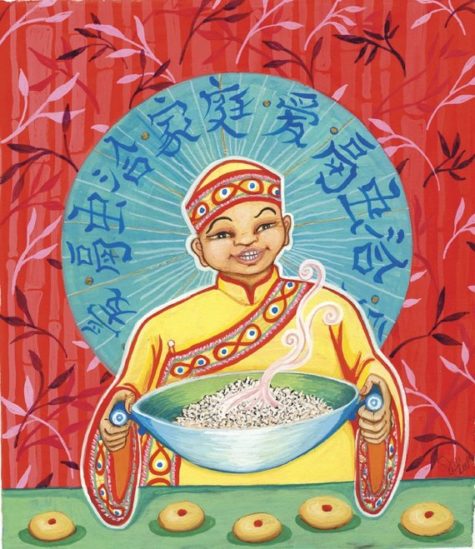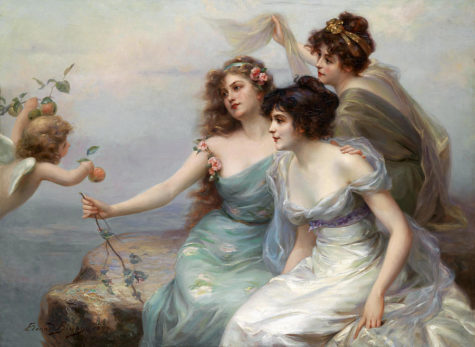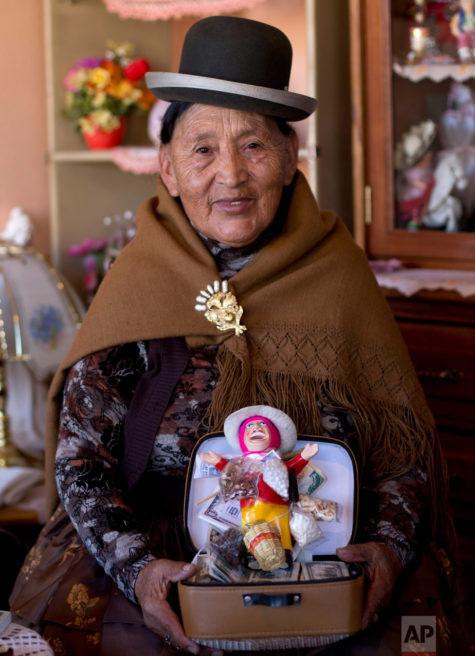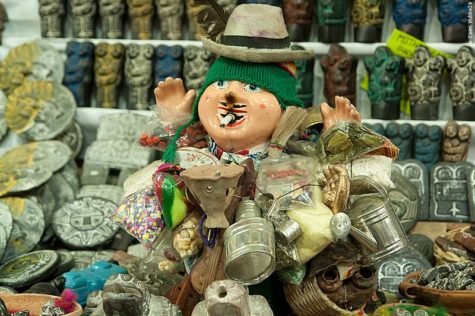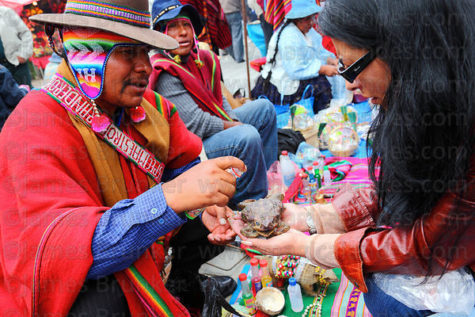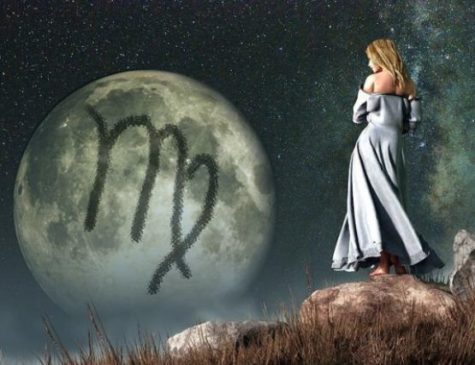Monthly Archives: January 2019
Dakini day, celebrated on the 25th day of each lunar month in Vajrayana Buddhist traditions, celebrates the feminine energy of wisdom. Devoted Buddhists will celebrate with a Tsok (Tsog), a feast including food, singing, a group (or single) sadhana full of sound and celebration. Most Tibetan Buddhist temples and meditation centers try to arrange a monthly Tsog on this day each month, with celebrants bringing food as offerings. It is always a happy day, that invites blessings not only for the attendees, but for all sentient beings.
This is one of the special days during a month, when Vajrayana practitioners perform a ritual of offering and purification of their commitments. It is believed that on this particular day, all the Dakinis gather in special sacred places and their energy is potently vivid and present at that moment.
When we perform practice on those auspicious days, we can connect with this potent energy and thus gain a lot of merit. It allows us to develop our practice and capacities, as well as purify our defilements and mistakes that we have accumulated with time. In this way, Dakini Day becomes very important for Vajrayana practitioners.
What is a Dakini?
The Dakini is a female being of generally volatile temperament, who acts as a muse for spiritual practice. Dakinis can be likened to elves, angels, or other such supernatural beings, and are symbolically representative of testing one’s awareness and adherence to Buddhist tantric sadhana.
Dakinis are portrayed as elusive, playful and often fierce and naked to symbolically convey how elusive true Wisdom encompassing “Emptiness” can be.
Without contradiction to their role as exemplars of Emptiness, Dakinis can also represent fierce activities, such as protection — the ferocious protective love of a mother.
Khandro Rinpoche defines the authentic Dakini principle as “a very sharp, brilliant wisdom mind that is uncompromising, honest, with a little bit of wrath.”
Dakinis appear in many forms. “The Dakinis are the most important elements of the enlightened feminine in Tibetan Buddhism,” says American teacher Tsultrim Allione. “They are the luminous, subtle, spiritual energy, the key, the gatekeeper, the guardian of the unconditioned state. If we are not willing to invite the Dakini into our life, then we cannot enter these subtle states of mind. Sometimes the Dakinis appear as messengers, sometimes as guides, and sometimes as protectors.”
Dakini are timeless, inorganic, immortal, non-human beings who have co-existed since the very beginning with the Spiritual Energy. In some New Age belief systems, they are angelic. This New Age paradigm differs from that of the Judeo-Christian by not insisting on angels being bona fide servants of God.
Moreover, an angel is the Western equivalent of a Dakini. The behavior of Dakini has always been revelatory and mysterious; they respond to the state of spiritual energy within individuals. Love is their usual domain – one explanation for Dakini or angels supposedly living in the sky or heaven. Manifestations of Dakini in human form occur because they supposedly can assume any form. Most often they appear as a human female. By convention, a male of this type is called a ‘Daka’.
In Buddhism, typically, the male Buddhas represent compassionate means, while the female Buddhas represent Wisdom. The symbols of bell and vajra (Ghanta and Dorje) represent female wisdom — the bell, which makes the sound of “Emptiness” — and the Vajra, representing compassionate means.
Dakini’s have always been a part of Buddhism, starting with the Jataka’s (stories of Buddha’s former lives) in which “divine beings are described as travelling through the air. In Sanskrit, such a being is called a Dakini, a term generally translated as “space-goer,” “celestial woman,” or “cloud fairy.”
Dakinis are typically thought of as the emanation of the “Enlightened Mind” understanding Emptiness. Another concept usually tied to Dakini practice is “bliss” — the state of blissful awareness of emptiness.
It is a wonderful experience to have a moment that realizes emptiness, a feeling of joy-bliss rather than “nothingness.” This is why Dakinis are often portrayed as active, dancing, joyful or fierce, naked and unencumbered.
Five Dakini Healing Mantra
The meaning of Dakini is the female enlightened energy and the awakened state of consciousness. Therefore, chanting this mantra increases and enhances all enlightened feminine energy.
Bam Ha Ri Ni Sa
The 5 Dakini also represents each of the 5 Elements:
- BAM ~ Buddha Dakini ~ (blue) ~ Mind energy, pacifies Ignorance
- HA ~ Vajra Dakini ~ (white) ~ Body energy, pacifies Anger
- RI ~ Ratna Dakini ~ (yellow) ~ Knowledge/Qualities/Healing, pacifies Ego/Pride
- NI ~ Padma Dakini ~ (red) ~ Speech energy, pacifies Desire
- SA ~ Karma Dakini ~ (green) ~ Action/Removes Obstacles, pacifies Jealousy
This mantra is helpful for all female related health issues, transforms negative emotions, unblocks channels, and balance 5 elements. When chanting this mantra on Dakini Day, the power magnifies ten-fold!
After chanting, blow into a glass of water, which infuses the healing vibration into the water, drink, and continue to enjoy its healing properties.
Sources:
January 29th is National Carnation Day, also known as Red Carnation Day, this day honors the memory of President William McKinley. The carnation was said to be McKinley’s favorite flower, and he always wore one in his lapel. The Columbus, Ohio Statehouse often commemorates by giving discounts at the museum shop for individuals wearing red carnations or dressed in scarlet.
In magick, carnations are used to remove hexes and negative energy. Carnations are especially good for clearing out love problems. You can brush carnation flowers down your body for a nice cleansing. After reaching your feet, break the stems to trap and hold the negative energy.
Adding white and red carnations or essential oil to your bathwater will stabilize your love life.
This flower also helps relieve the depression of winter. Keep red carnations on your altar to increase your energy level and to create more optimism in life. More on the magick and lore of carnations can be found here: Magickal Ingredients
Sources:
- Encyclopedia of Magickal Ingredients
- Web Holidays
The Xiao Nian Festival (Little New Year) or the Kitchen God Festival occurs approximately a week before the Chinese New Year. The dates vary depending on the region, and from year to year.
It is believed that people in northern China celebrate it on the twenty-third day of the twelfth lunar month, while the people in southern China celebrate it on the twenty-fourth. Along with location, traditionally the date may also be determined by one’s Profession. For example, “feudal officials made their offerings to the Kitchen God on the twenty-third, the common people on the twenty-fourth, and coastal fishing people on the twenty-fifth”.
In 2019, in Taiwan, the festival will be celebrated on January 29.
It is believed that just before Chinese New Year, the Kitchen God returns to Heaven to report the activities of every household over the past year to Yu Huang, the Jade Emperor. Once in Heaven, the words of the Kitchen God influences the amount of prosperity and abundance that each family will have bestowed on them in the new year. The Jade Emperor, emperor of the heavens, either rewards or punishes a family based on Zao Jun’s yearly report.
In order to ensure that the Kitchen God speaks sweetly of the family, offerings of incense and bowls of ‘sweet treats’ such as ripe melons, honey, glutinous cakes, and sugar candies are presented for his delight before his image is burned and his journey begins.
Gold and silver ‘ingots’ fashioned from paper are also offered, and little paper-mache sedan chairs are sometimes provided to offer comfort on the journey to Heaven.
On this day, the lips of Zao Jun’s paper effigy are often smeared with honey to sweeten his words to Yu Huang (Jade Emperor), or to keep his lips stuck together. Incense and candles are lit around the house. Sticky sweets are left for the Kitchen God, usually on an alter or shrine. The stickier the candy the better, so the god’s mouth sticks closed and he can’t speak poorly of the family. According to custom, men must leave the sweets.
To send the god on his way, his picture is taken outside and the effigy is burned and replaced by a new one on Chinese New Year’s Day. Firecrackers are often lit as well, to speed him on his way to heaven. If the household has a statue or a nameplate of Zao Jun it will be taken down and cleaned on this day for the new year.
In days leading up to the Lunar New Year, people clean their houses, decorate their homes with paper cuttings, couplets and written blessings, and prepare festival food. After the cleaning is done, homes are decorated in red papercuts and posters, and fresh flowers.
In order to establish a fresh beginning in the New Year, families must be organized both within their family unit, in their home, and around their yard. This custom of a thorough house cleaning and yard cleaning is another popular custom during “Little New Year”. It is believed that in order for ghosts and deities to depart to Heaven, both their homes and “persons” must be cleansed. Lastly, the old decorations are taken down, and there are new posters and decorations put up for the following Spring Festival.
According to traditional Chinese culture, the kitchen god returns from heaven on the eve of Spring Festival, so the sacrifices for the god are served until the day he returns.
How Zao Jun Became The Kitchen God
Though there are many stories on how Zao Jun became the Kitchen God, the most popular one dates back to around the 2nd Century BC. Zao Jun was originally a mortal man living on earth whose name was Zhang Lang. He eventually became married to a virtuous woman, but ended up falling in love with a younger woman. He left his wife to be with this younger woman and, as punishment for this adulterous act, the heavens afflicted him with ill-fortune. He became blind, and his young lover abandoned him, leaving him to resort to begging to support himself.
Once, while begging for alms, he happened across the house of his former wife. Being blind, he did not recognize her. Despite his shoddy treatment of her, she took pity on him and invited him in. She cooked him a fabulous meal and tended to him lovingly; he then related his story to her. As he shared his story, Zhang Lang became overwhelmed with self-pity and the pain of his error and began to weep.
Upon hearing him apologize, Zhang’s former wife told him to open his eyes and his vision was restored. Recognizing the wife he had abandoned, Zhang felt such shame that he threw himself into the kitchen hearth, not realizing that it was lit. His former wife attempted to save him, but all she managed to salvage was one of his legs.
The devoted woman then created a shrine to her former husband above the fireplace, which began Zao Jun’s association with the stove in Chinese homes. To this day, a fire poker is sometimes referred to as “Zhang Lang’s Leg”.
Alternatively, there is another tale where Zao Jun was a man so poor he was forced to sell his wife. Years later he unwittingly became a servant in the house of her new husband. Taking pity on him she baked him some cakes into which she had hidden money, but he failed to notice this and sold the cakes for a pittance. When he realized what he had done he took his own life in despair.
In both stories Heaven takes pity on Zhang Lang’s tragic story. Instead of becoming a vampirish hopping corpse, the usual fate of suicides, he was made the god of the Kitchen, and was reunited with his wife.
Another possible story of the “Stove god” is believed to have appeared soon after the invention of the brick stove. The Kitchen God was originally believed to have resided in the stove and only later took on human form.
During the Han Dynasty, it is believed that a poor farmer named Yin Zifang, was surprised by the Kitchen God who appeared on Lunar New Year as he was cooking his breakfast. Yin Zifang decided to sacrifice his only yellow sheep. In doing so, he became rich and decided that every winter he would sacrifice one yellow sheep in order to display his deep gratitude.
Source:
January 28th is Daisy day. It is observed annually, and celebrates the daisy flower, also known as the common daisy, lawn daisy, or English daisy. In England it is commonly called a bruisewort, because the crushed leaves were traditionally used to soothe bruised skin.
Daisies symbolize innocence and purity. This stems from an old Celtic legend. According to the legend, whenever an infant died, God sprinkled daisies over the earth to cheer the parents up.
In Norse mythology, the daisy is Freya’s sacred flower. Freya is the goddess of love, beauty, and fertility, and as such the daisy came by symbolize childbirth, motherhood, and new beginnings. Daisies are sometimes given to congratulate new mothers.
They also mean chastity and transformation because of the Roman myth of Vertumnus and Belides. Vertumnus, god of seasons and gardens, became enamored with Belides, a nymph. He continuously pursued her, and in order to escape his affections she turned herself into a daisy. Daisy’s scientific name Bellis, stems from this story.
Daisy’s are composite flowers, meaning that they actually consist of two flowers combined into one. The inner section is called a disc floret, and the outer petal section is called a ray floret. Because daisies are composed of two flowers that blend together so well, they also symbolize true love.
In Old English, daisies were referred to as “day’s eye” because at night the petals close over the yellow center and during the day they re-open. The phrase “as fresh as a daisy” originated from this, signifying that someone had a good night’s rest.
The word daisy also made its way into other slang words and phrases. In the 1800s, the phrase “ups-a-daisy” was commonly used to encourage children to get up when they fell. This eventually transformed into “oopsy daisy” or “whoops-a-daisy” — an exclamation after a stumble or mistake.
During this time “daisy” also became English slang for something excellent or appealing. This term made an appearance in 1993 Doc Holliday film Tombstone in which he uses phrases like, “You’re no daisy. No daisy at all.”
The daisy, and its meaning, also inspired renowned authors and poets throughout history. Shakespeare used a daisy chain in Hamlet to represent Ophelia’s innocence. Wordsworth also praised the daisy in his popular poem “To The Daisy.”
But now my own delights I make,
My thirst at every rill can slake,
And gladly Nature’s love partake
Of Thee, sweet Daisy!
The daisy has more than 23,000 varieties. Daisies are native to Northern Europe but can be found in North America, Australia, Africa, South America and even Iceland and Greenland. Daisies are often found on lawns, and are considered to be an invasive species, but are also seen as being valuable for ground cover in some garden spaces. They are perennial flowers that usually bloom in early to midsummer. They have a long growing season, and in some places will even produce a few flowers in mild winters.
Today is an excellent day to engage in some Daisy Magick. If you live in an area where daisies are growing this time of year, go out and try to find some. Enjoy them in nature, or pick some to put in a vase or to make a daisy chain with. You could also put them in a salad or on a sandwich, or use them to make tea. Some people use them for medicinal purposes. Wild daisy tea is used to treat coughs, bronchitis, inflammation, and more. Wild daisies are also sometimes applied to the skin for wounds and diseases.
Make sure to use sayings that use the word “daisy” today. Say “oopsies daisies” or “whoops-a-daisy” when you make a mistake. If something is healthy or full of energy say is is “fresh as a daisy.” If you talk about death, make sure to use to phrase “pushing up daisies.”
Origin of this Holiday
Our research did not find the creator, or the origin of this day. It is possible this holiday may of been created by the greeting card industry. There is also no reference as to why the month of January or why the 28th of the month was picked to celebrate this day.
This holiday is referred to as a “National” day- However, we did not find any congressional records or presidential proclamations for this day. Even though we didn’t, this is still a holiday that is publicized to celebrate. So enjoy the day and have fun with it.
Sources:
It is important to remember that the Moon cycles through the signs of the zodiac every couple of days, and it’s important to check the time of day that it enters and leaves the sign, because that will vary depending on your geographical location. If in doubt, you can use this moon sign calculator.
This is the sign when the Moon is weakest and least effective.
Scorpio rules merging with another, emotional truths, hidden talents, ritual magick, taboos, surgery, recycling, transformative experiences, rebirth, obsession, intensity, solitude, solo workings, workings with two people, noble motivations, sneaky tactics, extremes, mastery of the self, courage, dealing with crises, warriors and military, tactics, paranoia, bluntness, the occult in general, secret societies, accepting yourself-warts and all, integrity, soul mates, dirty jokes, uncovering secrets, mortgages and credit in general, underground water, swamps and water that is not potable, brackish or polluted.
Moon in Scorpio is one of the best signs for black magickal workings. Revenge, hatred, venting, exposing secrets, death spells, surgery, transformation, obsession, pure sex, the occult, the darker side of things, extremes, research, banishing spells, ending things permanently, death and dying. This is the most powerful and intense of all the moon signs. Secret, underhanded, and covert operations, willpower, drastic destruction. Like its opposite sign Taurus, Scorpio is usually permanent.
Magickal workings ruled by Pluto are successful at this time, these include spells for:
- Sex
- Death
- Initiation
- Transformation
- Regeneration
- Renewal
- Consecrating an athame or any tool which holds power
- Banishing
- Forging a group identity
- Secrets
- Research
- Uncovering hidden or lost things
- Developing psychic talents
- Will and willpower
- Magick in general
- Black magick
- Divination
- Contacting the other planes
- Contacting the dead
- Morals and morality
- Purgings and purification through suffering
- Exorcism
- Hypnotism
- Energy workings
- Nuclear power
- Warriors and fighters
- Taxes and insurance
- Will and willpower
Scorpio is the most passionate zodiac sign. The moon in Scorpio favors flirting, romantic adventures, everything bright and dynamic. In addition, it helps to learn to take responsibility, reasonably grow, to find our own principles. This time is favorable for the police, tax services, various research activities and the unification of people and companies.
Scorpio is a fertile zodiac sign, so it is the best time to plant fruit crops, or any other plants that you want. In addition, astrologers claim that the moon in Scorpio helps couples to conceive a girl.
Anything that you can do in the two to three Scorpio days for the region of the sexual organs has a doubly beneficial preventative and healing effect, as Scorpio rules the sexual organs.
Anything that puts a heavier burden on the sexual organs and urinary tract has a harmful effect during this transit than any other days. If you are able to postpone surgery or operations on the sexual organs during this time, it is best. Expectant mothers should also be cautious to stay clear of any heavy strain/exertion during this time. As it is believed that miscarriage occurs easily during the Scorpio full moon.
Moon Phase Info
- New Moon in Scorpio – ideal days for love and sexual pleasures.
- Waxing Moon in Scorpio – a time of nostalgia for a bygone love.
- Full Moon in Scorpio – time to throw out negative energy, select the appropriate method.
- Waning moon in Scorpio – people are opening from a new side, therefore communicate to get to know them better.

Scorpio Moon Meditation
Light a deep red candle and burn incense of or oil of Myrrh. Sitting in silence, breathe in the sign of Scorpio and place it in your heart center. Visualize the color scarlet surrounding you, and breathe that color into your heart, allow it to fill you with strength, courage, intensity, and passion. Honor these powerful energies and ask that they be used to assist in the journey to transform lower nature into your highest good.
Am I willing to be born anew…again and again, and again?
Sources:
It is important to remember that the Moon cycles through the signs of the zodiac every couple of days, and it’s important to check the time of day that it enters and leaves the sign, because that will vary depending on your geographical location. If in doubt, you can use this moon sign calculator.
Good time to form love relationships, marriages, partnerships of all kinds or cast spells to ensure the success of or to incite these. Peace, diplomacy, negotiation, legal matters, workings with two people, contracts, getting people to do what you want them to do easily and peacefully. Best for love spells.
Libra rules planting ornamental plants, strategy, diplomacy, negotiation, jewelry and ornamentation, debate and discussion, politeness, etiquette and manners, socializing and socialization, meeting people, laziness, mooching, tyranny of the weak, romanticism, yes person, use people nicely, get pretty, mentors, the other guy, workings with two people, or your significant other, love and marriage.
Moon in Libra is best for spellwork concerning the following:
- Legal maters in general
- Justice
- Contracts
- Love
- Romance and dating
- Partnerships
- Marriage
- War and/or peace
- Balance
- Beauty and harmony
- Music
- Finding a good doctor, lawyer, or accountant
- Socializing
- Team-building
- Diplomacy
- Spells for another
Libra is a very aesthetic sign of the Zodiac, which loves everything beautiful and harmonious. The moon in Libra is favorable for building relationships, creating a spectacular look, creativity and caring for beauty. During this period, it’s good to start building a house, start a renovation, travel, visit beautiful places.
Libra is considered to be a sign of average fertility, so you can plant various plants in your garden during the days of his lunar power. In addition, astrologers claim that the moon in Libra helps couples to conceive a boy.
Note:
Do NOT have surgical procedures performed on the kidneys or lower back at this time.
Moon Phase Info
- New Moon in Libra – a great day for a wedding and a divorce, for choosing in a difficult situation.
- Waxing Moon in Libra – time to clean the social circle, strengthen the necessary connections and eliminate the burdens.
- Full moon in Libra – a time of compromise and concessions.
- Waning Moon in Libra – not the best days for decision-making and action. Wait, listen to yourself.
Libra Moon Vision Board
Libra is gifted with the aesthetic sense, and this new moon is perfect for any manifestations related to art or creativity. What better way to manifest your intentions than by putting your creativity to use and making a vision board collage?
What you’ll need:
- Books, magazines, or photos you can cut up
- Scissors
- Glue
- Paper
- A candle in any color.
What to do:
Get ready to have some magickal, creative fun! Making a vision board is a great way to focus on your desires and what you want to manifest in your life or in the world — and you can easily turn this practice into a ritual. Begin by lighting your candle as a symbolic gesture of the ritual’s start.
Then write down a list of what you’d like to manifest when it comes to Libra’s territory and start looking through your magazines, books, or photographs, cutting out any images that speak to you or symbolically represent the things you’re striving for and welcoming into your life during this moon.
Once you have your collage pieces, arrange and glue them down on a piece of paper or card stock. Display the collage on your altar or in a visible spot in your home where you’ll see it frequently. Each time you do, focus on the intentions you set and their visual representations, and check in with yourself to track what work you’ve done to accomplish your goals and what more needs to be done.
Sources:
There is not a lot of information about this particular feast day and the dates given for it vary widely. Our calendar lists it as January 30 – 31, but some calendars assign it to January 17 – 18, others say April 18 – 19, May 26, July 9 – 10, or October 13. None of these calendars have any information other than that it is called “Feast of Charities” for the Greek goddesses known as the Graces. I don’t think anyone really knows much about it.
I did find a Feast of the Charities Ritual at Llewellyn. Here it is:
- Color of the day: Orange
- Incense of the day: Sage
Today is the Feast of the Charities. These old Greek goddesses of beneficence were known to the Romans as the Gratiae, or “Graces.” They are Aglaea, whose name means “splendor,” Euphrosyne, or “joy,” and Thalia, or “mirth.” The Charities bestow charm, beauty, and creativity on their worshipers. In this regard they serve a similar purpose to the nine Muses. Generosity and festive activities please these goddesses.
- Get some friends together and dress up.
- Arrange each other’s hair.
- Dance and sing, or perform some sacred theater.
- Visit an art gallery or walk through a street fair.
Alternatively, do something nice for the less fortunate. Bundle up old clothes you never wear anymore to recycle for the less fortunate, or hold a food drive and donate the results to a local charity. (Yes, the term comes from the name of these goddess, “Charities.”) You could also donate your money or time. Give of yourself, and you shall receive “grace” from the Charities in return. Be kind and giving, and your creativity will overflow!
Thousands of working class Bolivians crowd the streets of La Paz every year to buy miniature cars, houses and wads of fake dollar bills representing their dreams of wealth.
Alasitas is a 3-week long fair that, in La Paz, takes place beginning on the 24th of January and in Santa Cruz takes place in September. “Alasitas” is an Aymaran word that means “buy me”, and is the name of the annual fair where people buy miniature items that represent things they hope to attain within the year.
Alasitas is often referred to as the festival of miniatures, as the capital city of La Paz turns into a large market of small things that may become big if you know who to ask. Locals come and buy anything from tiny mobile phones, laptops, cars, and houses, to non-material things like love in the form of a male or female doll, or even matrimony in a form of a marriage certificate.
The festival is held in honor of the indigenous “god of bounty” or “abundance” called Ekeko (sometimes spelled Ekkekko, or Ekkeko). He is often rendered as a short, pudgy, mustached man who wears traditional Andean clothes and carries baskets of grains. Tiny items, from kitchen appliances to college diplomas, are taken home and placed around Ekeko, who the Aymara people believe will bless them with better lives in the coming year.
Hundreds accompany the Bolivian deity statuette “illa of Ekeko” as it is driven to the Alasitas Fair. Andean religious leaders carry urns with burning incense in a procession of the Bolivian deity statuette “illa of Ekeko” as it is driven to the Fair. The pre-Columbian figurine that symbolizes abundance was recently returned to Bolivia by the National Museum of Berna in Switzerland, 156 years after being taken away from its native country.
Images of Ekeko and other items, such as imitation bank notes are blessed during the festivities. The Ekeko statuette is traditionally given a cigarette, sprinkled with alcohol and surrounded with all the miniature items bought at the Alasitas Fair “so our wishes come true that year.”
Many bring their diminished dreams to the statues of Ekkekko they store at home, light a cigarette for he is known as a great smoker, dedicate a few prayers, and then wait for the miraculous gifts which will come within the next year.
Ekeko is the household god and it is not unusual for Bolivians to have a representation of this short and chubby, happy-looking fellow with a mustache and dressed in Andean clothes in their home. To ensure good luck the statue should be received as a gift and not be personally bought. Ekeko brings wealth to the family and keeps misfortune at bay.
To obtain the favor of fortune, Bolivians like to present Ekeko with miniatures – mostly made of a sugary substance – of things they would like to own. This can be a house, a car, furniture, clothes, an airplane but also food. A miniature passport may be bought if one has the wish to travel, a university diploma in case one wants to study or when graduation is near.
Perfectly copied miniature dollar and euro notes are favored over local bolivianos when a devotee wants wealth. Ekeko loves smoking, his statue has a special hole in the mouth for a cigarette.
During Alasitas, the streets are crammed with people who need to buy their miniatures replicas in time – the blessings will take place around noon and they should be prepared by then.
Locals claim if you really believe in miracles, you will get what you want, and many testify it truly works.
Alasitas’ main divinity is Ekeko, but Catholic priests give their blessing to the newly acquired miniature goods as well, while simultaneously honoring the Virgin of La Paz. Whereas the Franciscans focus on the Virgin, the yatiris – the local wizards – focus on Ekeko; the average Bolivian cares about both.
There is not one conclusive theory about how and where the festival started. In the Aymará language, alasitas means ‘buy from me’ and in pre-colonial times Alasitas was always celebrated in September (Bolivian springtime), to ensure a good crop. It is said that the Spanish changed the date to January 24 in commemoration of an indigenous uprising in 1781 and the siege of La Paz by Tupac Katari.
During the colonization the Spanish tried to force Catholicism on the indigenous people. They partly succeeded and many Bolivians converted to Catholicism, however, in reality the Bolivian religion became a mix of Catholicism and traditional Andean beliefs and rituals, which is easily recognized during, for instance, Alasitas.
Sources:
It is important to remember that the Moon cycles through the signs of the zodiac every couple of days, and it’s important to check the time of day that it enters and leaves the sign, because that will vary depending on your geographical location. If in doubt, you can use this moon sign calculator.
Virgo tends towards change. Virgo rules sickness and wellness, food and nutrition, herbs, vitamins, plastic arts and crafts, how weather affects health, armed forces, military logistics and supply lines, relatives in general, Maiden, pottery, craftspersons, hunting, tools, pets, small animals, recycling, clothes, work, workplace, planting herbs, computers, cleaning, exercise and fitness, detail work, critical and nitpicky people, work ethic, guilt, need to help others, obligations, inventiveness, community needs, magick, evocation, coven workings, low magick, debts and obligations, what you owe, materially and otherwise, payback, servitude, ground that is rolling, hilly, and good for pasture.
Moon in Virgo presides over matters pertaining to health, sickness, wellness, things that require precision and perfection, hygiene, nutrition, herbs, vitamins, the armed forces, clothing, the work place, co-workers, workings of white magick and healing for others, service to others. Things that involve details. Hospitals, healing, the medical profession, institutions, bureaucracy, red tape, attention to detail.
Magickal workings ruled by Mercury are successful at this time. This includes spellwork on the following:
- Health and healing
- Diagnosing
- Wellness
- Herb lore and study
- Organizing
- Tool consecration in general, especially the pentacle
- Diet
- Making tools and objects
- Business and trade
- Establishing a system or bureaucracy
- Mentality and intelligence
- Logic
- Numbers and mathematics
- Systems and analysis
- Familiars
- Climate
- Science
- Genetics
- Servants, underlings, co-workers
- Soldiers and the military
- Police and law enforcement
- Ecology in general
- Cleansings and Purification
Zodiacal Virgo is a decent and tireless worker. The moon in Virgo is favorable for any hard work and routine work, for establishing order in all spheres of life: head, papers, business, body, wardrobe. This is a good period to start the transition to a healthy lifestyle, sports, and useful shopping.
Virgo is considered a barren sign, so it is better not to plant fruit crops during the days of its lunar reign. You can plant lawn grass, ivy, ornamental plants. Despite the fact that Virgo is considered to be a barren sign, astrologers claim that the moon in Virgo helps couples to conceive a girl.
Note:
Do NOT have surgical procedures performed on the intestines, anus, or digestive system at this time.
Moon Phase Info
- New Moon in Virgo – the time of work, home improvement, care for children.
- Waxing Moon in Virgo – the best day to visit a psychologist.
- Full Moon in Virgo – a great time for work that requires attention to detail.
- Waning Moon in Virgo – the most suitable days for laundry and cleaning.
Moon In Virgo Selenite Meditation
Prepare for your Selenite meditation by selecting a piece of Selenite that feels size appropriate for you. Cleanse and bless your crystal, study the shape and layered formation of your crystal. Feel the inclusions that may be present within your crystal.
Sit in an upright position in a quiet dimly lit room. Inhale deeply through your nose and slowly exhale from your mouth. As you inhale, visualize golden/white light energy entering your nose, filling your lungs, chest cavity and heart center. allow tension, stress, frustration to be released, leaving your body through your mouth as you exhale. Continue your deep breathing until you feel relaxed.
Pick up your Selenite, place it in your left hand and place your right hand beneath your left hand and cradle your crystal in your lap. gaze at your Selenite crystal and quietly attune yourself to the glowing white of the crystal. Slowly raise your Selenite crystal to your crown chakra (top of head) allow the white light of the Selenite to penetrate into the crown chakra.
Remove the Selenite from your crown chakra, and place it onto your third eye center for up to 5 minutes. While your Selenite is positioned here, you may repeat a calming affirmation, or you may wish you calmly lay in silence and allow your mind to journey into light-mindedness.you might experience visions of distant lands, conscious channeling, or you might find yourself traveling through the cosmos or conversing with light beings.
Individual results may vary, but for those who are diligent and patient Selenite can open the door to enlightenment beyond measure which is why this is one of my absolute favorite healing crystals to work with.
When you’re ready to end your meditation, slowly count backwards from 10, to 1. when you reach one, remain SEATED and DO NOT open your eyes.
Visualize your feet as being the roots of a large tree, reaching through the floor and sinking deep into mother Earth.
Attune to the Earth, hold this visual of yourself firmly planted and rooted back into the physical plane. Hold this visualization for 3-5 minutes. It is important that we ground ourselves back into the physical plane after our crystal meditations,to allow us feelings of well-being and security.
Once again, slowly count back from ten to one. When you reach one, open your eyes. Breathe deeply several times, inhaling through your nose and out through your mouth you will feel very relaxed, invigorated, and fully grounded back into the third dimension reality.
Important:
NEVER cleanse your Selenite with water, this will cause it to erode and weakens the structure of your crystal.
Sources:
January 21 is the Eve of St Agnes. There are many traditions associated with both this night and tomorrow night, all intended to bring dreams of the future husband. Here are some of them.
- Walking thrice backwards around a churchyard in silence at midnight, scattering hemp seed over the left shoulder.
- Boiling an egg, removing the yolk and filling the center with salt and then eating the whole, shell included!
- Sticking 9 pins into a red onion, taking it backwards to the bedroom and sleeping with it under the pillow.
But the most often repeated one is that of making a Dumb Cake. Here are the instructions:
Three, five or seven maidens should gather together on St Agnes Eve and make a cake from flour, salt, eggs and water. While they are mixing and baking the cake all the girls should stand on something different and which they have never stood on before. Each girl should take a hand in adding each of the ingredients and each girl should turn the cake once. When the cake is baked they should eat it all between them. Then, walking backwards, they should all retire to bed where they will dream of their future husbands. The whole process from start to finish should take place in complete silence and should be completed just before midnight.
It is interesting that all these methods include the elements of silence, walking backward, and retiring to bed at midnight.
Here are some more old old spells for St Agnes night:
On Saint Agnes’ night, take a row of pins and pull out every one, one after another, saying a Pater Noster, sticking a pin in your sleeve, and you will dream of him or her you will marry. “Knit tne left garter about the right-legg’d stocking” (let the other garter and stocking alone), and as you rehearse these following verses, at every comma knit a knot:
“This knot I knit,
To know the thing I know not yet,
That I may see
The man that shall my husband be,
How he goes and what he wears.
And what he does all the days.”
Accordingly in your dream you will see him, if a musician, with a lute or other instrument; if a scholar, with a book,” and so on.
Another dream-charm for St . Agnes’ Eve was to take a sprig of rosemary and another of thyme and sprinkle them thrice with water, then place one in each shoe, and stand shoe and sprig on either side of the bed, repeating:
“St Agnes, that’s to lovers kind.
Come ease the trouble of my mind.”
In many places the notion prevailed that to insure the perfection of these charms the day must be spent in fasting. It was called “St . Agnes’ fast.”
Keat’s beautiful lines commemorative of the day seem doubly exquisite when read after conning the clumsy folk-rhymes:
They told me how upon St. Agnes’ Eve
Young virgins might have visions of delight,
And soft adorings from their loves receive
Upon the hony’d middle of the night.
IF ceremonies due they did aright;
As supperless to bed they must retire
And couch supine their beauties lily white;
Nor look behind, nor sideways, but require
Of heaven with upward eyes for all that they desire.
In Scotland the lasses sow grain at midnight on St . Agnes Eve, singing,—
“Agnes sweet and Agnes fair
Hither, hither now repair.
Bonny Agnes, let me see
The lad who is to marry me.”
And the figure of the future sweetheart appears as if reaping the grain.
Here is yet another one:
A key is placed in the Bible at the second chapter of Solomon’s Song, verses 1, 5 and 17, and the book tied firmly together, with the handle of the key left beyond the edges of the leaves. The tips of the little finger of the charm-tester and of a friend are placed under the side of the key, and then they “tried the alphabet” with the verses above named; that is, they began thus:
“A. My beloved is mine, and I am his. He feedeth among the lilies. Until the day break and the shadows fall away, turn, my beloved,” etc.
At the word “turn” the Bible was supposed to turn around if A were the first letter of the lover’s name. Thus could the entire name be spellled out.
Found in
